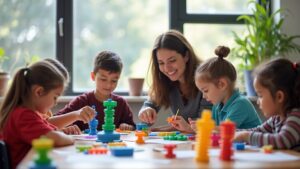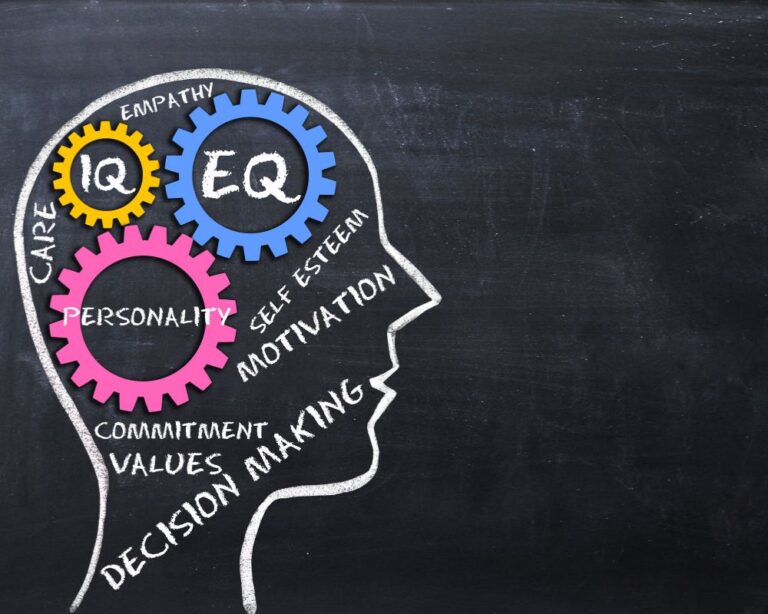Howard Gardner’s theory of multiple intelligences reshapes how learning happens by acknowledging that students think in different ways. Instead of treating intelligence as a sole skill, it identifies strengths like visual-spatial, musical, or interpersonal abilities. Teachers using this approach customize lessons to match how students naturally process information, making classrooms more engaging and inclusive. While it requires creativity from educators, the payoff—students who feel comprehended and capable—makes the effort worthwhile. What transpires when schools genuinely embrace these differences?
Exploring Howard Gardner’s Multiple Intelligences Framework
Although traditional views of intelligence often focus on math and language skills, Howard Gardner’s theory of multiple intelligences suggests a broader, more inclusive perspective. Gardner identified eight distinct types of intelligence, including verbal-linguistic, logical-mathematical, spatial-visual, musical, bodily-kinesthetic, interpersonal, intrapersonal, and naturalistic. Each type represents unique ways students process information and engage with the world.
This theory shifts the focus from a single measure of intelligence to appreciating diverse cognitive strengths. Educators use differentiated instruction to tailor activities that match students’ varied intelligences, helping them learn more effectively. By acknowledging these differences, classrooms become more inclusive, allowing every student to thrive. Gardner’s framework encourages teachers to design lessons that tap into multiple skills, making learning more engaging and meaningful for all.
Differentiating Between Intelligences and Learning Styles
How can educators discern the distinction between multiple intelligences and learning styles as both appear to shape how students acquire knowledge? Howard Gardner’s theory of multiple intelligences identifies distinct cognitive strengths—like verbal-linguistic, logical-mathematical, or musical intelligence—as innate abilities.
In contrast, learning styles describe preferences, such as visual or auditory input, which lack strong evidence for improving outcomes. While bodily-kinesthetic or interpersonal intelligence reflects how a student solves problems, learning styles suggest how they might prefer to receive information.
Gardner cautions against conflating the two, as teaching to learning styles may not enhance understanding. Instead, acknowledging diverse intelligences—like intrapersonal or visual-spatial strengths—allows educators to tailor methods to students’ actual capabilities, not just perceived preferences. This clarity helps avoid ineffective one-size-fits-all approaches.
Practical Strategies for Implementing Multiple Intelligences in Classrooms
Why do some students thrive with hands-on projects while others excel in group discussions? The answer lies in their unique type of intelligence, which shapes how they learn best. Teachers can augment student learning by designing diverse learning activities that cater to different types of intelligences.
For example, visual-spatial learners benefit from diagrams, while musical learners show sensitivity to the sounds of language or rhythm. Logical-mathematical learners demonstrate an ability to conceive conceptually, while interpersonal learners shine in collaborative tasks. Intrapersonal learners, with their capacity to be self-aware, thrive in reflective exercises. Naturalistic learners have a capacity to detect patterns in nature, and linguistic learners display an ability to produce and recognize nuanced language. Through tailoring lessons to these strengths, educators create inclusive, engaging classrooms where every student can succeed.
Benefits of a Multiple Intelligences Approach to Education
A multiple intelligences approach to education doesn’t just acknowledge differences in how students learn—it transforms those differences into strengths. Rather than by embracing Gardner’s theory, educators create inclusive learning environments where each student’s unique abilities are valued.
Differentiated instruction tailored to multiple intelligences boosts student engagement by connecting lessons to their natural strengths, fostering higher motivation. This method supports a holistic development, helping students grow academically, socially, and emotionally.
In diverse learning environments, students gain confidence as they explore concepts through varied intelligences, from logical reasoning to creative expression. Improved academic results emerge when lessons resonate with individual learning styles, preparing students to navigate a complex world.
Ultimately, celebrating multiple intelligences ensures no learner is left behind, making education more effective and meaningful for all.
Challenges and Considerations for Educators Using Multiple Intelligences
Teaching with multiple intelligences brings opportunities but also presents several hurdles educators must carefully navigate. Adapting Howard Gardner’s Theory into classrooms requires balancing eight different ways students learn, ensuring no type of intelligence dominates.
Some learners thrive with visual learning, while others prefer auditory learning or different kinds of engagement. This complicates lesson planning as educators must tailor subject matter to varied strengths without neglecting core Teaching and Learning objectives.
Evaluating progress fairly across the theory of multiple intelligences also proves difficult, as conventional tests might not reflect diverse skills. Additionally, limited resources or large class sizes make individualized approaches challenging.
Educators must continuously adjust methods, ensuring all students benefit from the model while maintaining academic rigor and inclusivity.
Conclusion
Gardner’s theory reframes learning like an intricate puzzle where each piece reveals student potential through different shapes. While initial critics questioned his framework, modern neuroscience now shows brains really do process information in specialized ways. Teachers embracing this approach find students more engaged once lessons cater to their strengths, though balancing all eight intelligences requires thoughtful planning. As classrooms make space for diverse talents, education transforms from a one-way street into a bustling intersection of discovery.





